TVs that respond to gestures, 3D
printing, and big sensors in small cameras. These are just a few of the
emerging technologies you’ll see on the shelves this year
As 2013 gets into full flow, we look
further ahead to bring you a round-up of the main tech themes of the future.
Although we’re unlikely to see any major breakthroughs in the near future, such
as flexible LCD displays going on-sale, there’s plenty to whet the appetite.
From hybrid laptop/ tablets to Ultra HD TVs and affordable full-frame-sensor
cameras, it should be an exciting next couple of years.
All-in-one and desktop PCs
Predictions about what will happen at the
end of the PC era have been floating around for years, and they become more
dramatic and more inaccurate with each claim. Why would desktops die off now,
when they are becoming so cool?
Sure, drastic changes are afoot, and
perhaps the desktops of the near future won’t look at all similar to the
desktops of the present; but change and evolution are facts of life in the tech
industry, and adjusting to the new is a necessity.
All-in-one PCs were once seen as a luxury
that couldn’t possibly support the needs of the average computer user. They
lined the walls in sci-fi movies and boasted futuristic-looking programs that
had no discernible purpose. Today, they have become centerpieces for PC
companies to showcase the glamorous side of desktop computing.
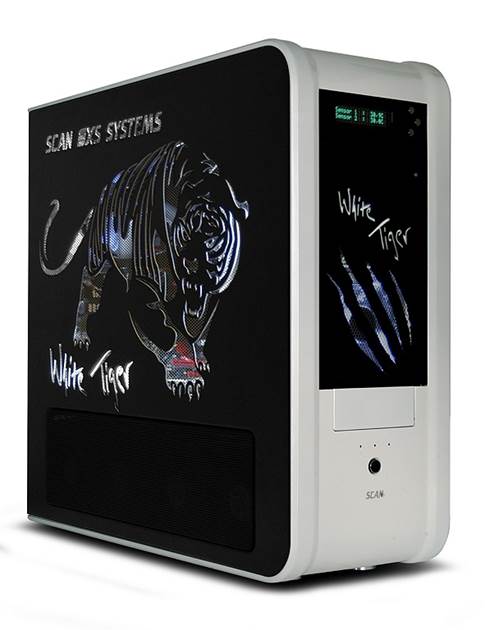
Scan’s
3XS white tiger takes pride in its size and weight
Cheaper and stronger with every new
generation of processor, all-in-ones are becoming viable power PCs. In past
years, you’d have been hard-pressed to find anything of decent quality even at
$1,499. Today, you can find plenty of options below $1,050, allowing everyone
to reap the benefits without breaking the bank.
In the future, most PCs will be equipped
with a discrete graphics card or enhanced CPU to power basic games at an
adequate frame-rate, and they will boast built-in Blu-ray capabilities and
video-on-demand apps.
More families will adopt media PCs as their
center for entertainment, with touch controls that every user can access,
regardless of their experience level. PCs will migrate away from the dark,
lonely corners of home offices and storm into living rooms, kitchens, and other
main gathering areas to provide endless family enjoyment in the form of
streamed movies, TV, creative apps and games.
The conventional desktop systems of today –
the tower units that are either parked under a desk or displayed prominently
like a show car will remain popular with certain niche groups (such as gamers
and business owners, at opposite ends of the PC user spectrum). They will also
remain the cheapest option for basic computing and office-oriented productivity
when glamour and graphical power aren’t necessary. Physically, however, they
will begin to shrink; indeed, just this past year, we’ve seen certain computers
dwindle to the size of a broadband router, such as the CompuLab Fit-PC3 Pro.
Enthusiast computers, on the other hand,
will continue to grow to the size of a mini filing cabinet to accommodate extra
video cards and water-cooling equipment. Some will glow and shine with custom
paint jobs and interior lighting, modified to become impressive works of art
indeed, some such models already exist.
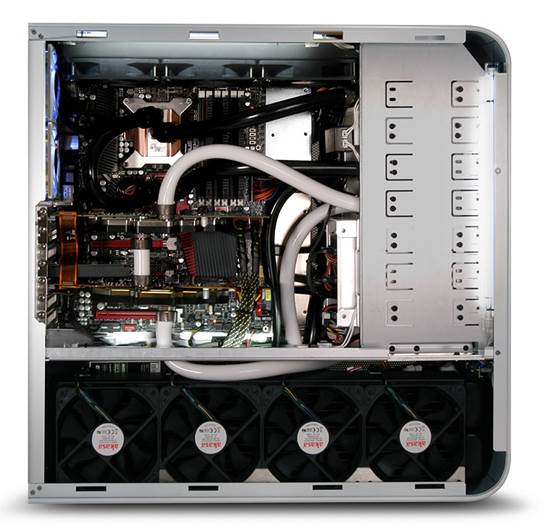
The
Scan 3XS White Tiger is one such product that takes pride in its size and
crushing weight
The Scan 3XS White Tiger is one such
product that takes pride in its size and crushing weight. PCs such this will be
proudly displayed nest to a desk bearing multiple monitors and enough gear to
make it look like a space cruiser’s command deck. Our biggest hope is that
games of the future will be able to catch up to the power that some computer
enthusiasts will be wielding.
The future of desktops is bright and
ongoing, no matter what radical claims to the contrary are made. Although most
people may resort more frequently to their phones and tablets to get work done
on the go, true computing power will continue to come from that thing plugged
into a wall.
Laptops
The line between laptops and tablets is
rapidly blurring. Five years from now, the line may have vanished entirely.
Today’s tablets and laptops are very
different gadgets. The ideal consumption devices, tablets are frequently used
for passively browsing the web, watching video and reading on the go. Laptops
are better suited for productivity.
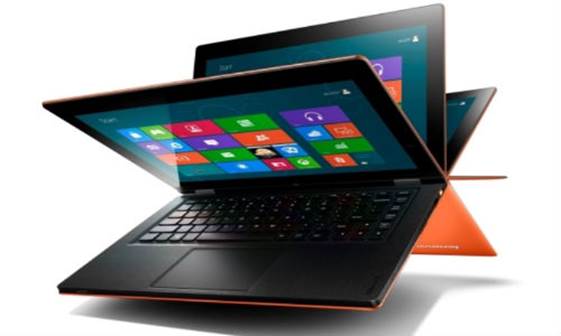
Lenovo’s
Yoga 13, Dell’s XPS 12 Convertible Ultrabook and the Sony Duo 11 are already
combining elements of tablets and laptops
In the long run, these two different
devices will become aspects of the same hardware. Tomorrow’s laptop and tablet
will be one and the same – and that’s why this section is as much about tablets
as laptops.
The first phase of that transition is already
under way: Windows 8 hybrid systems show a little of what’s possible. Lenovo’s
Yoga 13, Dell’s XPS 12 Convertible Ultrabook and the Sony Duo 11 are already
combining elements of tablets and laptops.
But these systems remain more laptops than
tablets overall. The Sony Duo 11, with its 11in screen, is the lightest of the
bunch, yet it still weighs nearly 1.3kg. Today’s pure tablets have smaller
screens and limited storage, and lack the performance of fully fledged laptops.
The future will be tablet centric. Larger
tablets, with screens up to 13in, will become lighter and thinner, and will be
adaptable for productivity by means of a separate, wireless keyboard. Touch
interfaces will improve, although external-pointing devices such as pens and
mice will still be needed for precision work.
What technologies are emerging to create
this tablet-centric future? An improvement in persistent memory technology
(better known as flash memory) is one key component. Even as cloud storage
becomes more important, having large-capacity local storage is critical,
particularly if you’re working in an area that doesn’t offer reliable (or fast
enough wireless broadband).
You’ll need to have those big presentations
on local storage; and for video and photo editing, ample storage is key.
Improvements in cloud storage, along with a decreasing cost per gigabyte, will
be important, however, in keeping files and settings in sync between multiple
devices.
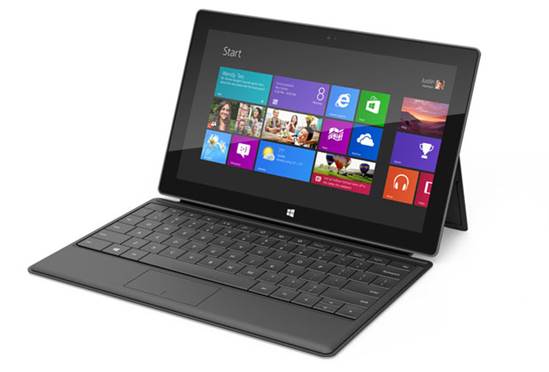
Microsoft
surface: a tablet, but one with a detachable keyboard that allows it to act as
a laptop
CPU improvements, of the type we’ll see
with Intel’s Haswell CPU, will permit tablets designed to dock and become fully
fledged PCs. CPUs will use less power, for longer battery life, without giving
up the performance we see in today’s Ultrabooks.
One key improvement that Intel’s Haswell
and other future processors will bring to the table in better graphics
performance, even as power consumption decreases. Today’s tablets and
Ultrabooks offer limited performance in 3D games, for example. Better 3D
performance may mean a wider range of gaming options for tablets.
Connectivity must improve as well. Today’s
mobile broadband speeds are improving, but bandwidth continues to be expensive
per gigabyte. Consumers will crave access to higher-capacity wireless broadband
such as 4G, and if the mobile operators can’t deliver that capacity at a more
reasonable cost (EE take note), alternative solutions will likely emerge.
Metered connections aren’t going to disappear, but prices need to drop well
below the levels we see today.
Also coming soon are better tablet docks,
tuned for business use. Such tablet docks will include a full-size keyboard,
support for multiple monitors, and additional storage.
The traditional clamshell laptop won’t
completely disappear, however. Some users will still need access to larger
screens, robust keyboards and higher levels of performance. Engineers,
professional graphics designers and others may need 15- to 17in systems while
on the go. But they will constitute a niche market focused on business users.
Mainstream consumers are driving tablet adaption today, and those users will
flock to the converged devices of the future.
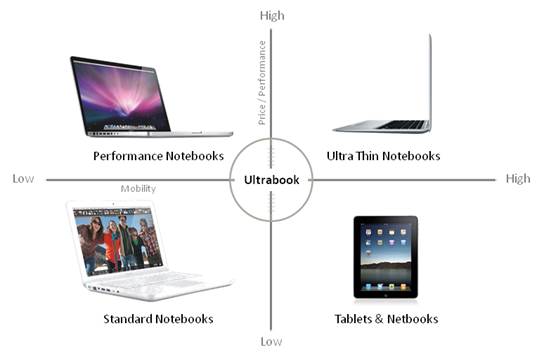
CPUs
will use less power, for longer battery life, without giving up the performance
we see in today’s Ultrabooks
In the long run, the two extremes will
co-exist. Users will have a powerful desktop system that connects and is
synchronized via the cloud to mobile devices that every user will own. People
won’t need bulky laptops, but instead will carry lightweight tablets whose
performance will exceed that of today’s Ultrabooks. As a result, consumers will
have the best of both worlds: a powerful desktop computer at home, and a tablet
with docking options that will offer enough performance and capability for
their on-the-go needs.